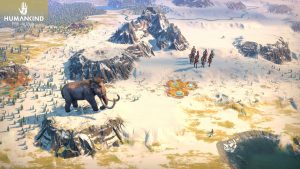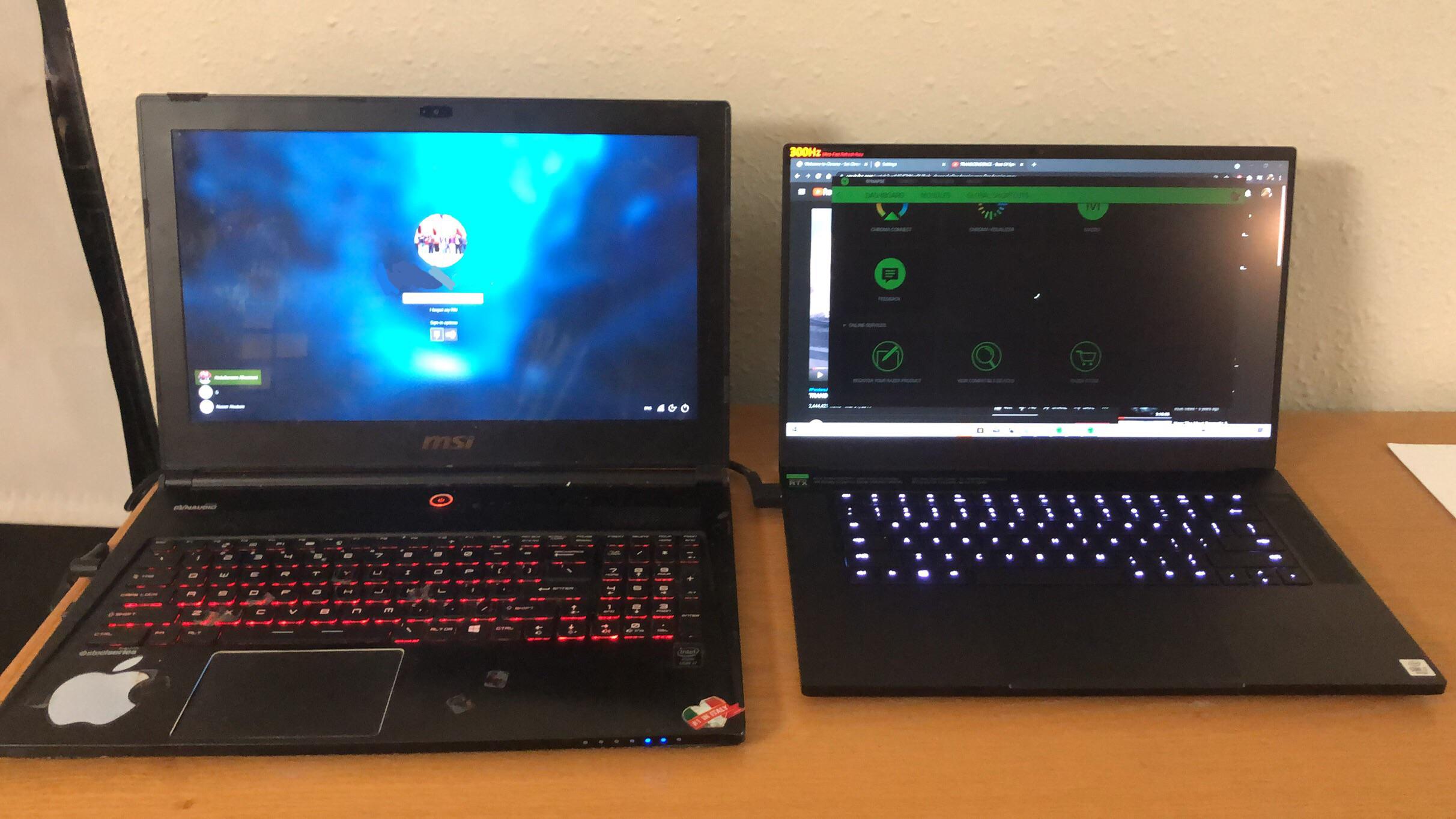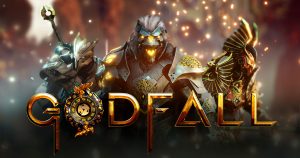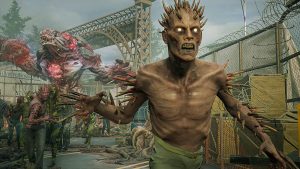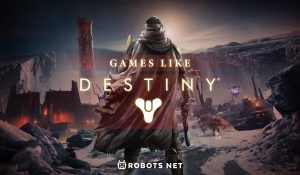The Total War series has made its fair share of cool games, from those that run roughshod with history like the Total War: Shogun games to the more mythical ones like Total War: Troy. In addition to these is the Total War: Warhammer series, which continues with its sequel Total War: Warhammer 3. In this preview, we’ll talk about Total War: Warhammer 3 and what it offers, as well as its release date.
What Is Total War: Warhammer 3?
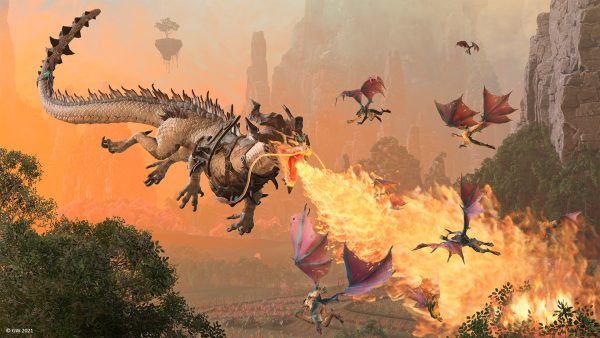

Total War: Warhammer 3 is the third entry to the Total War: Warhammer series created by Creative Assembly and published by Sega. The game is, of course, part of the greater Total War series but set in Games Workshop’s Warhammer fantasy.
Lastly, the Total War franchise is a collective of strategy games that have different games that dwell into historic events as well as fantasy offerings.
When Is the Release Date of Total War: Warhammer 3?
The game is set to release on February 17, 2022. It will be playable on PC and you can pre-order the game today.
Total War: Warhammer 3 Preview
To tide ourselves from the anticipation of the release date for Total War: Warhammer 3, let’s talk about what we can expect from the game itself.
Gameplay, Combat, and Controls
If you’ve played any of the Total War games, then Total War: Warhammer III should be a familiar beast. The game’s usual turn-based and real-time strategy and tactics gameplay still hold even now, with a few additional tweaks.
When it comes to the campaign, the players will move their created armies all over the game map. They’ll also manage their various settlements in a turn-based manner. These can range from creating more units and managing resources to talking with other AI factions, and more. Each faction also has its faction benefits that can aid them in one aspect of the game or another, allowing for variance in playstyles.
In addition to this, the players also have the option to do diplomacy, fight, and conquer the campaign’s AI-controlled factions. When armies fight in open battle, they have two options: either they auto-resolve, the boring option, or they battle in real-time.
When doing the latter, the player is placed into a battlefield with terrain like hills, woods, roads, plains, et cetera. On one side is his army, while on the other is the enemies. The player has a few moments to strategize, place their battalions of units in optimal locations, before starting the battle. Only through accomplishing an objective, routing the enemy, or destroying the enemy wholesale can the player win.
In addition to the campaign, Total War: Warhammer 3 is stated to also have a custom battles mode. Here, players can make customized real-time battles. In addition to this, there are also online multiplayer battles where 2 players fight mano-o-mano with faction armies they created personally.
There are also other game modes in Total War: Warhammer 3 as well, we’ll discuss those in a later part of the article.
Story
As of right now, there’s not that much known about the Campaign story of Total War: Warhammer 3. What we do know is that the game is set in the far East, on the realms of Kislev and Cathay. These two nations are always on the brink due to the constant attacks of the Forces of Chaos. These can range from probing attacks or from a Chaos God’s followers attacking wholesale on their nations.
Only time will tell what the game’s story will show us. But from what we can tell, Cathay and Kislev will have a hard time fighting off the endless hordes of the Chaos Gods. In Kislev’s case, a new ruler just took the throne, Empress Katarin of Kislev, though her rule is rocky and full of conspirators. In Cathay’s case, their Grand Bulwark stood strong for centuries. However, strong blood runs thin, and the wall’s defenders, though strong of will and body, can be exhausted.
Now, the forces of Chaos stir again, sensing weakness. From the East, vast armies of daemons rise to conquer, corrupt, and destroy the southern nations. From the plague-infested forests of Nurgle’s realm to the mind-shattering vistas of Tzeentch’s domain, all of Chaos stirs.
Now, it’s up to these two nations to be the bulwark and stymie the forces of Chaos from breaching into their lands. Will they survive? No one knows. What we do know, is that to do so, there will be Total War.
Graphics and Level Design
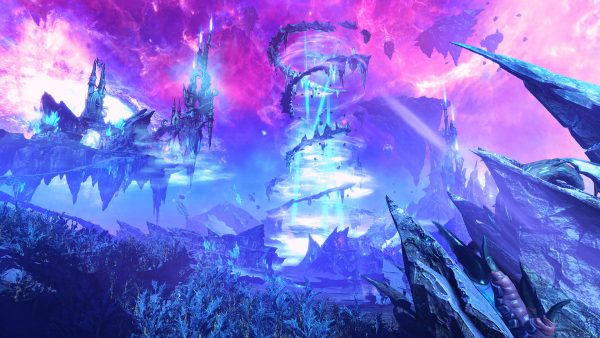

If you’ve already played Total War: Warhammer 2 before, then the sequel’s graphics and level design might look familiar. There are a few graphical improvements here and there, things that come at par with the course due to the time that the game was being developed, sure. But overall, the game’s graphics is comfortably familiar.
However, it’s the locales themselves that have changed. Cathay is a beautiful landscape of rushing waterfalls, trees, and cool cityscapes. In the East is the Great Bulwark, a massive wall that keeps Chaos at bay, beautifully rendered and shown in the game’s engine. The Kislev north is a frozen winterscape, filled with tough and hardy men, constantly bickering by themselves, and against Chaos itself. Each of these nations is tough and very much appropriately fitting to their respective lands, which Total War: Warhammer 3 depicts incredibly well.
Meanwhile, the desolate lands of Chaos are appropriately bad, each with its flair and vibe to them. From the disgusting, plague-ridden gardens of Nurgle’s domain to the psychedelic Euclidian weirdness of Tzeentch’s lands, the bloody red hellscape of Khorne’s bulwark, and the dangerous perversion of Slaanesh’s pleasure palace. Combine this with unique, memorable units taken straight from the Tabletop (at least in Chaos’ case, Cathay and Kislev don’t have Tabletop units yet.), and you have a cool backdrop of the game’s constant war setting.
Sound Design
Total War: Warhammer 3 hasn’t made any changes in terms of sound design. There are improvements in the quality of the audio, sure, and the Cathay and Kislev nations have their unique flair. But overall, if you’ve heard Total War before, you’re pretty much set.
Game Modes
As per usual, Total War: Warhammer 3 has several game modes that players can avail of. The Campaign is already obvious, as is the Custom Battles and Multiplayer, and we will talk about those below in addition to Immortal Empires.
Campaign
The hearth blood of all Total War games is its expansive campaign mode. The Campaign mode takes players into a storyline of a particular faction in the game from Cathay and Kislev to the forces of Chaos. As usual, there’s a hint of canonicity to the game’s campaign, but as we don’t know the game’s story yet, we can only speculate.
Custom Battles/Multiplayer
Next to this is some good ol’ fashioned fun. Custom Battles allow players to create their faction armies and use them in battles against other armies they’ve created, or against other players. These multiplayer battles are usually 1v1 affairs filled with micromanagement, strategic thinking, and a metric ton of violence and death. It’s proper fun, and with new factions, it’s going to be ridiculous. We fully expect some cheesy stuff to happen in multiplayer. Multiple cannons perhaps?
Immortal Empires
Last on the list is Immortal Empires, a game mode that will be added to the game sometime after its release. It’s a variant of Mortal Empires that have every single faction in Total War: Warhammer on one huge map.
For those that own all three Total War: Warhammer games, rejoice as the factions from those games will be added into Immortal Empires as well. Its fully expected by the players that the game will lag as a result. However, the developers Creative Assembly stated that they’ve been improving on the game’s engine to reduce the lag. Hopefully, that’s the case.
New Features
In addition to the new factions, there are some new features added into Total War: Warhammer 3 that weren’t in previous games. Most of these are quality of life improvements, and we’ll list all of them below:
- Players can now toggle flying units to either fly or land. This gives players even more strategic additions to their playstyles.
- They’ve added additional hotkeys for specific things. These include idle unit hotkeys, ability hotkeys, guard mode, skirmish mode, and fire-at-will mode also have hotkeys.
- Players can now place units in formation easier, with melee units going in front of ranged units.
- Healing is now percentage-based and is no longer a flat value. However, Fire damage can stunt the amount of healing given to a unit.
- There are now better charge reflection mechanics for units like spearmen. Thus, cavalry charges towards them will now deal more damage to the cavalry.
- There’s a new “Braced” icon for units, allowing players to see which of these units can take on charges.
- There’s now a slow-motion mode for players casting spells, allowing them to strategically place where spells will activate.
- Healing spells now heal and resurrect complex units like Chariots.
- A new spell effect called thorns is added.
- Magic Resistance is reworked into Spell Resistance. This means that only spells are affected by the resistance and that magic attacks aren’t a hindrance anymore.
Total War: Warhammer 3 New Factions
Total War: Warhammer 3 has a whole new roster of factions to play with, and we’ll talk about those below. From the forces of Chaos to the mighty Cathay bulwark and the forces of frosty Kislev. Get to know the new factions from Total War: Warhammer 3 ahead of its release date.
Chaos
The Forces of Chaos make their full and proper appearance in the Total War series and by golly, they’re a treat. The Chaos faction is divided into four subcategories, and if you’re familiar with Warhammer lore, this should be pretty obvious. This is because Tzeentch, Khorne, Slaanesh, and Nurgle each have their beef with each other. Like, major beef.
The four Chaos Gods have their agendas in the Warhammer universe, with these agendas corresponding to their purview as a Chaos God. We’ll talk more about these agendas on their respective entries, but keep this in mind: Chaos is an unrelenting force in Warhammer, something that doesn’t die or abate. It can be stymied, for a time, but eventually, it will claim what it wants to get.
Luckily for us, the various nations think otherwise and continue to fight them. But enough about that, let’s talk Chaos God factions.
Tzeentch
The Changer of Ways, the Great Conspirator, God of Evolution, Trickery, Magic, Destiny, and Lies. Tzeentch’s armies constantly plot for the destruction of their god’s enemies. Ever bickering, ever scheming. Through years upon years to endless millennia has passed in their god’s domain, this hasn’t changed since. A roiling pit of schemes and plots all.
Tzeentch’s armies consist of powerful spellcasting daemons, most of them. Some have their magic come instinctually, others studied for untold millennia.
Khorne
Next on the list is Khorne, the God of Murder, the Blood God, the God of War, Hate, Strength, Courage, Rage, and Honour.
Khorne is considered by some to be the strongest Chaos God, but that title’s pretty much in contention between the four of them. His purview is anger and hatred, and war is his coin and barter. The very act of killing empowers him, but not the artful kind of killing. He doesn’t care who wins or dies. To him, so long as the blood flows, he’s perfectly satisfied.
Above all else, he espouses eternal, constant warfare, for warfare is the way he gets his thirst for blood and death. In addition to this, he enjoys those warriors that stand against all odds to claim victory, the ones that drown in a river of blood to destroy their enemies. Those that worship Khorne can be both honorable warriors and blood-crazed berserkers. For Khorne, though, that’s perfectly fine.
Slaanesh
Next on the list is Slaanesh, the youngest Chaos God, the Prince of Unspeakable Pleasure, the Lord of Excess, Purveyor of Decadence. He’s dedicated to pursuing all manner of earthly gratification and tempts the people into indulging and discarding any sort of decency. He espouses hedonism and pleasure in all forms, and always in sheer excess to the point of one’s destruction. Out of all the Chaos Gods, he’s the youngest due to the emotion of pleasure, decadence, and desire only existing in races with sentience like Humans and Elves. He guides them all to fulfilling their desires, and maybe, just maybe, taking even more, to the point of their destruction.
Compared to the other Chaos Gods, Slaanesh’s purview and powers are focused more on the civilized races. Those of the North don’t have time to indulge themselves after all as every day is a fight for survival. Thus, most of Slaanesh’s mortal followers are those that came from the South, the ones that have enough time to indulge themselves in mortal pleasures and joys.
Amongst the rest of the Chaos Gods, save perhaps Tzeentch, Slaanesh is an incredibly polarizing god. He can be the embodiment of romance, passion, desires, those that are oftentimes expressed by artists, sculptors, dancers, craftsmen. Other times, he’s the embodiment of pride, selfishness, sensation, and hedonistic pleasures.
This duality, above all else, is the reason why Slaanesh is considered to be the most insidious of all Chaos Gods by some.
Nurgle
And lastly, we have Nurgle, the Plaguefather, Lord of Pestilence, Grandfather Nurgle, and so on. The Eldest of the 4 Chaos Gods whose purview is Death, Decay, Disease, despair, Destruction, and Rebirth. The one Chaos God who keenly knows the plight of Mortals, for they fear death above all else.
Although Nurgle is death, pestilence, and decay, he’s also the one that embodies rebirth. After all, the decay of life is simply part of the laws of nature, a cycle that will eventually return to birth more life. He also embodies mortal perseverance and survival, for where else do they turn to if not for Grandfather Nurgle? Where else will they go to find the strength to endure their sores and plight?
Anyhow, Grandpappy Nurgle loves us. Sadly, that kind of love is a bit bad for our health since hugging him means instant death.
Cathay
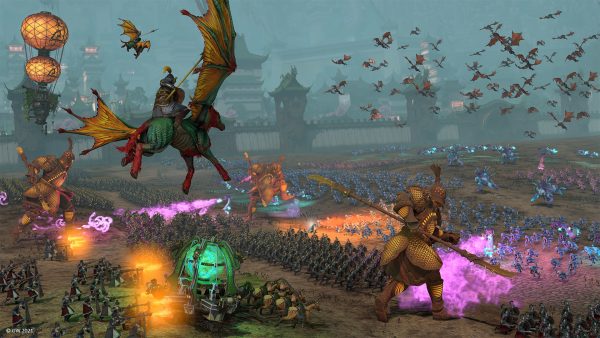

Next up on the list is Cathay, the Empire of the Celestial Dragon, a nation of humans located in the Far East. Connected to the West by the Silk Road, where it was said that untold riches lie.
Cathay is ruled by their Celestial Dragon Emperor and the Moon Empress. Under their eternal rule, Cathay grew strong and great. However, their lands are always under threat by the forces of Chaos in the North.
Thus, a great Bulwark was made to stem the tide. With their mighty bulwark, ingenious war machines, and the magic of Yin and Yang, they force the tide of Chaos back for centuries. Only now, did the Bulwark seem to fail. But through grit and will, Cathay will endure. They drove Chaos back before after all, why should this time be different?
Cathay has two lords at their disposal Miao Ying the Storm Dragon and Zhao Ming, the Iron Dragon.
Kislev
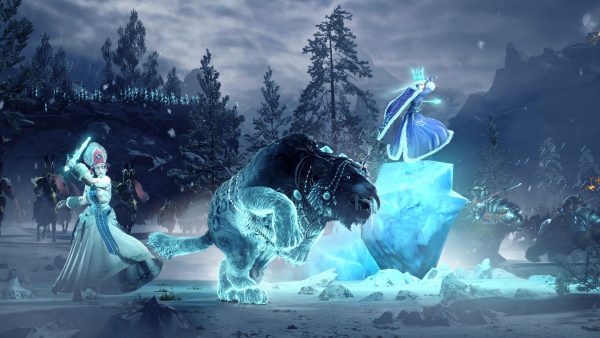

Next is Kislev of the North, also known as the Realm of the Ice Queen, an inhospitable land, of cold and frost. Those of the North are hardy men, incredibly strong of body and will, always up to the challenge of both the cold and their enemies. Ruled by their Tzarina Katarin, she wields the cold of her home and like the Cathays, is always under threat by Chaos from the North.
The nation of Kislev is a war-torn place A frozen land of plains and ice. The Worlds Edge Mountain Range rings the nation, protecting it from Chaos warbands, though some would still manage to get in somehow. There are some parts of the nation that aren’t covered in snow and ice though, but they’re few and far in between. Still, that didn’t stop the Kislevites from doing their best with the hand they’re dealt. After all, their ancestors came from the north to escape from the clutches of Chaos. Compared to the cold, that’s nothing.
The Kislevites are those that stand at the very edge of the civilized world in the North. They’re the ones that hold the northern sections of the map and prevent Chaos from seeping down to the South. Without their constant protection, the Empire may be overrun by the warring Chaos bands that will gush forth from the Worlds Edge Mountain Range.
Now though, the Chaos warbands of the north are stirring. What’s worse, the Ogre Kingdoms are also making their move. And to cap it all off, Tzarina Katarin’s reign isn’t as secure as it seems. Only time will tell what happens in the Frozen North.
Kislev has several units under their employ, with their Tzarina Katarin leading the charge.
Ogre Kingdoms (DLC)
Next up are the Ogre Kingdoms, who are going to be Total War: Warhammer 3’s first DLC. They’ll be available to those that pre-ordered the game or bought it during the game’s first week. After that, they’ll be paid DLC that people can buy.
Back in the ancient days, the ogres needed to leave their old homeland due to a comet crashing into their homes. This comet’s impact created the Great Maw and pretty much corrupted their homeland forcing them to migrate. They then forced out the Sky-Titans off their new home, with them becoming modern-day giants. Meanwhile, the ogres settle on their new home, with all the implications, cannibalism, and everything else to bear.
The ogres as a faction are all Huge units, nothing in the game is bigger than them, except for Bloodthirsters and Terracotta Warriors. Even then, that’s put in contention. They do have some smaller units though, but these small units usually support the big boys.
The Ogre Kingdoms are led by Greasus Goldtooth and Skrag the Slaughterer.
Total War: Warhammer 3 vs Similar Games
Now that we’ve talked about Total War: Warhammer 3 and while we’re waiting for the release date, let’s talk about games like it. We’ll start with Civilization 6, Age of Wonders: Planetfall, and lastly, Humankind.
Civilization 6
Civilization 6 focuses more on the creation of kingdoms and nations compared to Total War: Warhammer 3. Don’t get us wrong, there can be wars between nations, but foremost in Civilization 6 is how the civilizations build up into mighty empires, each with their own goals on how to win.
Other than this though, Civilization 6 already has a pretty established formula, and both this series and Total War: Warhammer 3 are fundamentally different in that regard.
Age of Wonders: Planetfall
Next on the list is Age of Wonders: Planetfall, which has the same gameplay as Civilization 6, but with a more turn-based combat system when it comes to battles. The game’s battles all take place in a grid, with different panels each with its effects. Each unit in the game can be stacked together to form a team of units that then join up when a battle starts.
Other than this, it’s mostly the same game as Civilization 6 with the only difference being on how they conduct battles. The turn-based battle system lends itself well to the game as each decision that the player makes can affect the course of a fight. Of course, they also have the choice of auto-resolving the battle, but that’s not a good idea in most cases.
Humankind
Last but not least is Humankind, another 4X grand strategy game that has the unique mechanic of changing cultures based on your current Era. For example, You start as a nomadic tribe when the game begins. However, once you accumulate enough knowledge, you can transcend to the Ancient Era and choose a new culture. You do this every time you go to another era.
The gameplay loop of the game is overall pretty unique and has a lot of cool implications. This is especially true since there are a lot of bonuses that stack to form hilarious combos. In terms of combat, it’s pretty similar to Age of Wonders: Planetfall, though all the battles take place on the overworld map.
Get Ready for the Release Date of Total War: Warhammer 3
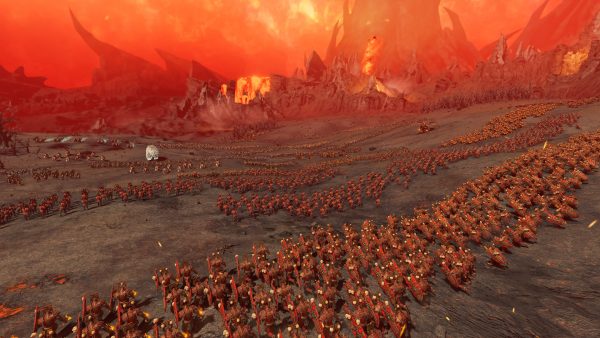

Total War: Warhammer 3 is an exciting addition to the Total War: Warhammer series. Given the series’ current state in the lore, we can only be more excited about what will happen next. Will Chaos reign and overrun the civilized world? Will Cathay and Kislev hold them back?
All we can do now is wait for the release date to enjoy Total War: Warhammer 3.







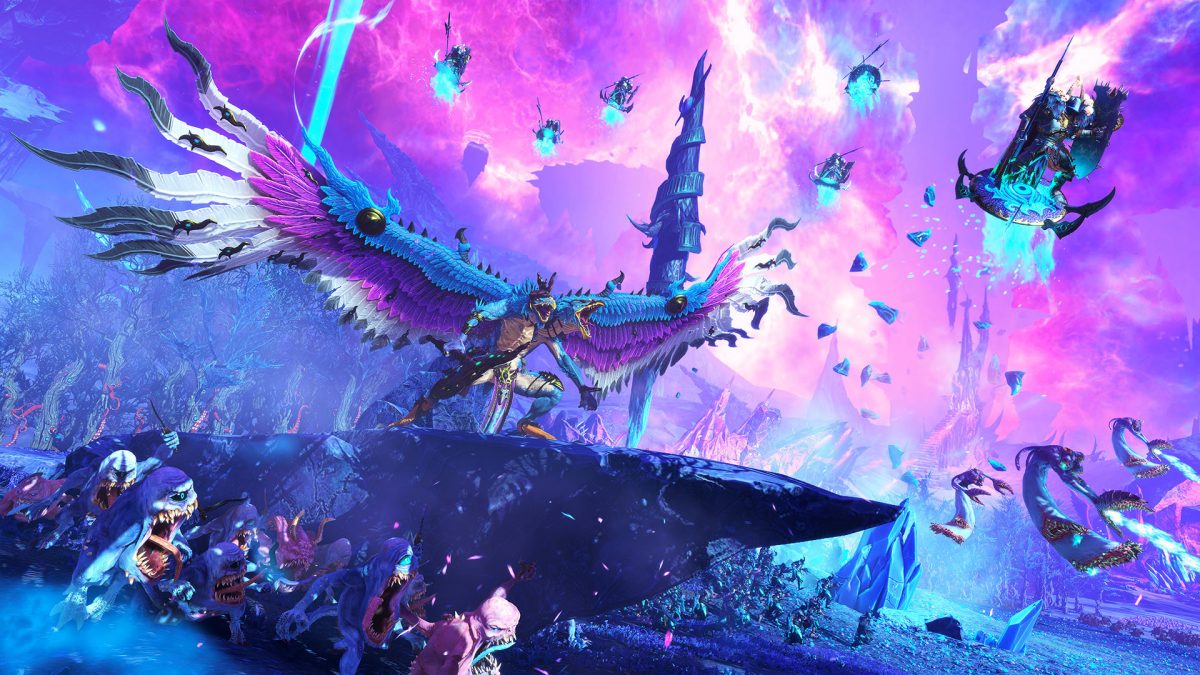

![20 Best Single Player PC Games of All Time [2022]](https://robots.net/wp-content/uploads/2020/04/PC-Games-300x200.png)
